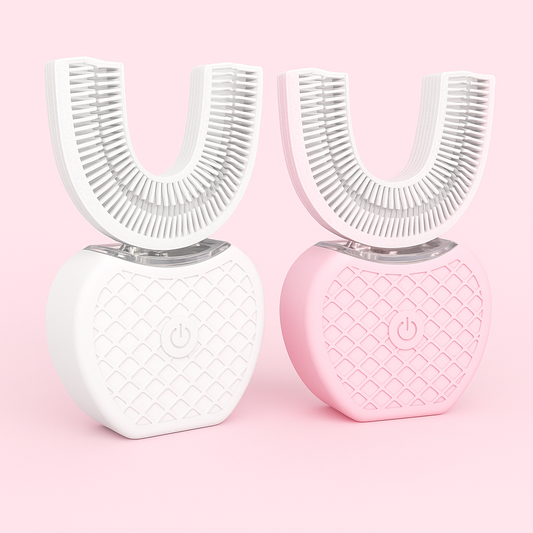Introduction
Fresh breath is a sign of good oral health—not just for humans, but for dogs too. As beloved members of our families, dogs deserve the best care possible, and their oral hygiene is no exception. In 2025, with advances in veterinary care and a wider variety of dental products available, maintaining your dog’s fresh breath and healthy mouth is more achievable than ever. Bad breath, or halitosis, in dogs is often more than an inconvenience; it can be a symptom of underlying health problems such as periodontal disease, gastrointestinal issues, or systemic illnesses like diabetes. This comprehensive guide will equip you with essential tips, practical advice, and modern solutions to keep your dog’s breath fresh and their oral health in top condition throughout the year and beyond.
1. The Importance of Regular Veterinary Dental Check-Ups
Veterinary dental check-ups are foundational to your dog’s oral health. While daily brushing and dental chews help, professional evaluations and cleanings are critical for detecting and managing dental diseases early.
- Why Veterinary Check-Ups Matter: Dentists can spot early signs of gingivitis, tooth decay, and oral infections that are invisible to the naked eye. Untreated, these can lead to tooth loss and systemic infections affecting the heart, liver, and kidneys.
- Professional Cleaning: Veterinarians perform thorough cleanings under anesthesia, removing tartar and plaque below the gum line—areas that home care cannot reach.
- Frequency Recommendations: Most adult dogs benefit from an annual dental exam and cleaning. Dogs with pre-existing dental disease or older pets may require more frequent visits.
- What to Expect: During the visit, your vet will examine your dog’s teeth, gums, and oral tissues, potentially taking dental X-rays to assess tooth roots and bone health.
2. Mastering the Art of Brushing Your Dog’s Teeth
Brushing your dog’s teeth remains the single most effective way to maintain oral hygiene at home. Though it might seem daunting at first, with patience and the right tools, it can become a simple and even enjoyable routine for both you and your dog.
- Choosing the Right Tools: Use a toothbrush designed specifically for dogs—these often have softer bristles and angled heads for easier access. Never use human toothpaste, as it contains fluoride and other ingredients harmful if swallowed by pets. Instead, use enzymatic dog toothpaste available in various flavors that appeal to dogs.
- Getting Started: Begin by getting your dog comfortable with the toothbrush and toothpaste. Let them sniff and lick the paste from your finger or the brush. Gradually, introduce gentle brushing motions on the outside surfaces of their teeth.
- Technique: Focus on the gum line where plaque tends to accumulate. Brush in small circular motions. It’s normal if your dog resists initially—keep sessions short and positive.
- Frequency: Aim to brush daily for the best results, but brushing at least 2-3 times a week can still substantially improve oral health.
- Positive Reinforcement: Reward your dog with treats or affection after each session to build positive associations.
3. Choosing the Right Dental Chews and Treats
Dental chews are an excellent adjunct to brushing, helping mechanically remove plaque and freshen breath. They also satisfy a dog’s natural urge to chew, which can reduce boredom and destructive behaviors.
- What to Look For: Select dental chews endorsed by veterinary dental organizations, which meet safety and efficacy standards.
- Types of Chews: Popular options include rawhide alternatives (that are digestible and safer than traditional rawhide), dental bones, and specially formulated dental sticks that help reduce tartar and promote healthy gums.
- Chew Size and Safety: Always choose a chew size appropriate for your dog’s breed and chewing strength to prevent choking or intestinal blockages.
- Watch for Allergies and Sensitivities: Monitor your dog for any adverse reactions, especially if introducing a new product.
- Timing: Dental chews can be given daily or several times a week, depending on the product and your dog’s needs.
4. Harnessing the Power of Water Additives
Water additives have gained popularity as a hassle-free way to improve your dog’s oral hygiene. Simply adding a vet-approved product to your dog’s drinking water can reduce harmful bacteria, plaque, and bad breath.
- Advantages: Ideal for dogs who resist brushing or are finicky about dental treats.
- How They Work: These additives contain ingredients that inhibit bacterial growth and decrease plaque formation, promoting a cleaner mouth.
- Choosing a Product: Look for additives with proven efficacy, safe ingredients, and preferably those recommended by your veterinarian.
- Usage Tips: Follow manufacturer instructions carefully. Regular use is necessary to see benefits.
5. Incorporate Crunchy Fruits and Vegetables into Your Dog’s Diet
Natural foods can play a role in oral health by helping to remove plaque and freshen breath. Crunchy fruits and vegetables act as natural toothbrushes, stimulating saliva production and mechanically cleaning teeth.
-
Safe Options for Dogs:
- Carrots: Low-calorie and great for chewing.
- Apple slices: Rich in vitamins; remove seeds and core.
- Cucumber slices: Hydrating and gentle on teeth.
- Green beans: Low calorie and crunchy.
- Precautions: Avoid toxic foods like grapes, raisins, onions, garlic, and anything seasoned or sweetened.
- Portion Control: Cut fruits and vegetables into bite-size pieces to prevent choking, especially for small dogs.
6. Probiotics: Supporting Digestive and Oral Health
Emerging research highlights the connection between gut health and oral health. Probiotics help balance the gut microbiome, which can reduce systemic inflammation and improve breath by decreasing odor-causing bacteria originating in the digestive tract.
- Choosing Probiotics: Select products formulated specifically for dogs, containing strains like Lactobacillus acidophilus or Bifidobacterium known to aid digestion and immune function.
- Consult Your Veterinarian: Always talk to your vet before starting any supplement to ensure it’s appropriate for your dog’s health profile.
- Additional Benefits: Probiotics can improve stool quality, reduce gas, and support overall wellness.
7. Homemade Dental Care Solutions You Can Trust
For pet owners seeking natural alternatives, certain homemade dental care solutions can complement professional care and commercial products. However, safety is paramount.
-
Popular DIY Options:
- Baking Soda Paste: Mix a small amount of baking soda with water to form a paste for brushing. Baking soda neutralizes odors but should be used sparingly.
- Chlorhexidine Rinse: Diluted chlorhexidine solutions can be used as a mouth rinse to reduce bacteria; consult your vet before use.
- Coconut Oil: Some owners use coconut oil for its antibacterial properties, applying it to teeth or mixing it with toothpaste.
- Safety First: Never use ingredients toxic to dogs such as xylitol, essential oils, or human mouthwashes.
- Complement, Don’t Replace: Homemade solutions should complement regular brushing and vet care, not replace them.
8. Lifestyle and Environmental Factors to Consider
Beyond direct dental care, several lifestyle choices influence your dog’s breath and oral health:
- Hydration: Encourage plenty of fresh water intake to maintain saliva flow, which naturally cleanses the mouth.
- Diet Quality: High-quality commercial or balanced homemade diets support strong teeth and gums.
- Weight Management: Obesity increases the risk of dental disease, so maintaining a healthy weight is beneficial.
- Regular Exercise: Physical activity supports overall health, including immune function that can protect against oral infections.
- Avoid Smoking Around Pets: Secondhand smoke can worsen oral health and breath quality.
9. Recognizing When Bad Breath Signals a Health Problem
While occasional bad breath can be normal, persistent or particularly foul odors may indicate serious health issues requiring veterinary attention.
-
Signs to Watch For:
- Yellow or brown tartar buildup on teeth.
- Red, swollen, or bleeding gums.
- Difficulty eating or pawing at the mouth.
- Excessive drooling or visible oral sores.
- Sudden changes in breath odor or appetite.
- Underlying Causes: Beyond dental disease, bad breath can arise from kidney disease, diabetes, respiratory infections, or gastrointestinal problems.
- What to Do: Schedule a veterinary visit promptly to diagnose and treat the root cause.
Conclusion
Ensuring your dog’s breath remains fresh and healthy in 2025 requires a multi-faceted approach that combines regular veterinary care, daily brushing, the right dental chews, water additives, a balanced diet rich in natural foods, and potential use of probiotics and safe homemade solutions. These proactive steps not only enhance your dog’s breath but also protect against painful dental diseases and improve overall wellbeing.
By dedicating time and attention to your dog’s oral health, you create a foundation for many happy years filled with affection, play, and close moments free from unpleasant odors. Remember, your veterinarian is your best partner in tailoring an oral care routine specific to your dog’s unique needs. Embrace these essential tips today and enjoy the benefits of a healthy, happy canine companion tomorrow.


